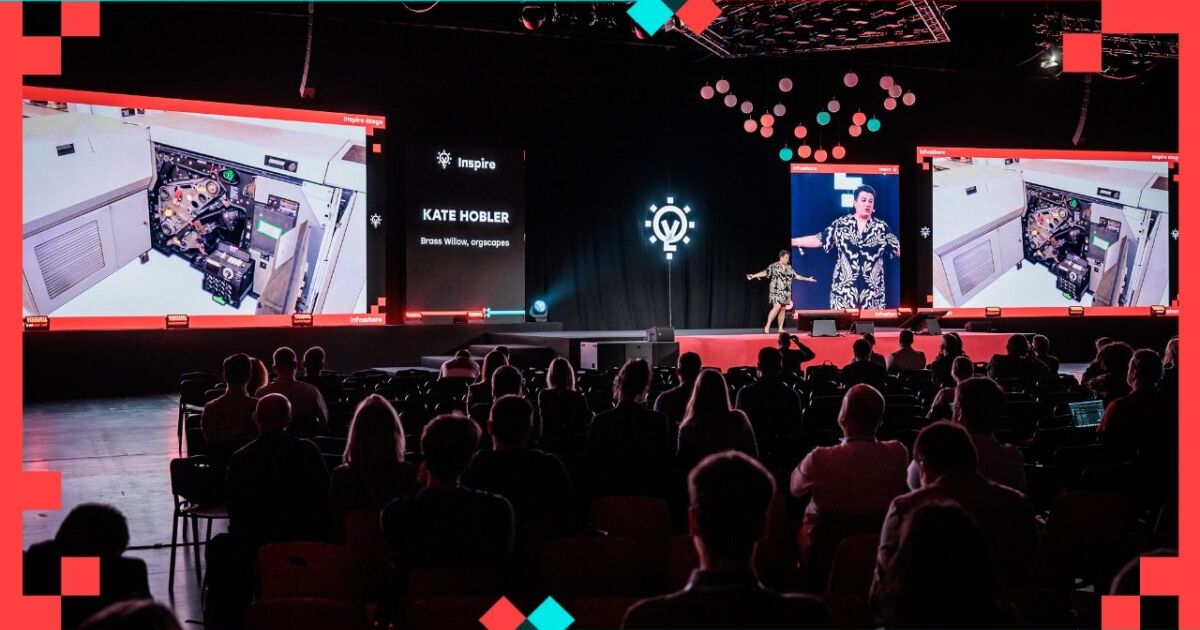VIEW SPEECH SUMMARY
Core Elements of the Scarcity Protocol:
1. Find a genuine need or purpose:
- Change must be driven by a real, meaningful reason that motivates the organization.
- Examples include the U.S. moon landing mission driven by national pride and competition during the Cold War.
- Without a compelling purpose (e.g., space projects with unlimited budgets), motivation and creativity weaken.
2. Bring experts together:
- Form small groups of internal experts who understand the organization's context.
- Avoid relying extensively on external consultants; use them only sparingly and briefly.
- Small expert groups create a "pull system," encouraging others to address problems themselves while awaiting expert support.
3. Create and grow open resources:
- Develop shared repositories or knowledge bases that people can access for self-help.
- Example: Xerox technicians used a radio network to share expertise for machine repairs, creating a learning organization.
- These resources enable broader staff to solve problems independently and amplify the effect of the expert group.
4. Keep the expert group small and scarce:
- Scarcity forces others to act proactively rather than waiting for experts.
- Successful organizations (e.g., a Dutch nursing organization with thousands of nurses managed by only 20 expert coaches) employ this model.
Signs of the Scarcity Protocol Working:
- Change continues despite experts being busy.
- The shared resource repository expands organically.
- Other organizational units seek to adopt the change.
- Early adopters (pioneers) are proud and recognized.
- Unauthorized internal consultants appear helping others.
- Internal benchmarks show measurable change (important to set baseline metrics).
Practical Insights & Actionable Items:
- Identify and validate a genuine organizational need or purpose by engaging frontline workers and avoiding management information bubbles—go "undercover boss" to listen directly.
- Assemble a small, primarily internal expert team with minimal external consultancy support.
- Develop open knowledge sharing resources to empower employees to self-solve problems.
- Maintain scarcity in experts to promote initiative and distributed problem-solving.
- Set benchmarks before starting initiatives to measure progress.
- Observe and encourage organic growth signs of change adoption.
- Recognize the current economic crisis as an opportunity to apply this scarcity protocol effectively.
1. Find a genuine need or purpose:
- Change must be driven by a real, meaningful reason that motivates the organization.
- Examples include the U.S. moon landing mission driven by national pride and competition during the Cold War.
- Without a compelling purpose (e.g., space projects with unlimited budgets), motivation and creativity weaken.
2. Bring experts together:
- Form small groups of internal experts who understand the organization's context.
- Avoid relying extensively on external consultants; use them only sparingly and briefly.
- Small expert groups create a "pull system," encouraging others to address problems themselves while awaiting expert support.
3. Create and grow open resources:
- Develop shared repositories or knowledge bases that people can access for self-help.
- Example: Xerox technicians used a radio network to share expertise for machine repairs, creating a learning organization.
- These resources enable broader staff to solve problems independently and amplify the effect of the expert group.
4. Keep the expert group small and scarce:
- Scarcity forces others to act proactively rather than waiting for experts.
- Successful organizations (e.g., a Dutch nursing organization with thousands of nurses managed by only 20 expert coaches) employ this model.
Signs of the Scarcity Protocol Working:
- Change continues despite experts being busy.
- The shared resource repository expands organically.
- Other organizational units seek to adopt the change.
- Early adopters (pioneers) are proud and recognized.
- Unauthorized internal consultants appear helping others.
- Internal benchmarks show measurable change (important to set baseline metrics).
Practical Insights & Actionable Items:
- Identify and validate a genuine organizational need or purpose by engaging frontline workers and avoiding management information bubbles—go "undercover boss" to listen directly.
- Assemble a small, primarily internal expert team with minimal external consultancy support.
- Develop open knowledge sharing resources to empower employees to self-solve problems.
- Maintain scarcity in experts to promote initiative and distributed problem-solving.
- Set benchmarks before starting initiatives to measure progress.
- Observe and encourage organic growth signs of change adoption.
- Recognize the current economic crisis as an opportunity to apply this scarcity protocol effectively.
The Scarcity Protocol: Engineering Change with Limited Resources
10:20 - 10:40, 28th of May (Wednesday) 2025 / INSPIRE STAGE
What's the secret sauce of startups? Why are they so innovative? Why did so many companies change radically when the pandemic broke out? How can many businesses rise from the ashes of bankruptcy stronger than ever? And why did Nokia collapse? Why is Boeing virtually unable to change? Why are government contractors so inefficient? You will find all those answers when we analyze company change with The Scarcity Protocol in mind. You'll see how sensible scarcity coupled with urgency and transparency will help you transform your organization with fewer resources than you thought were necessary.
AUDIENCE:
Startup
Scaleup
Profitable Company
TRACK:
Business & Tech trends
Growth
Leadership
TOPICS:
BizDev
FutureNow
Trending Now



